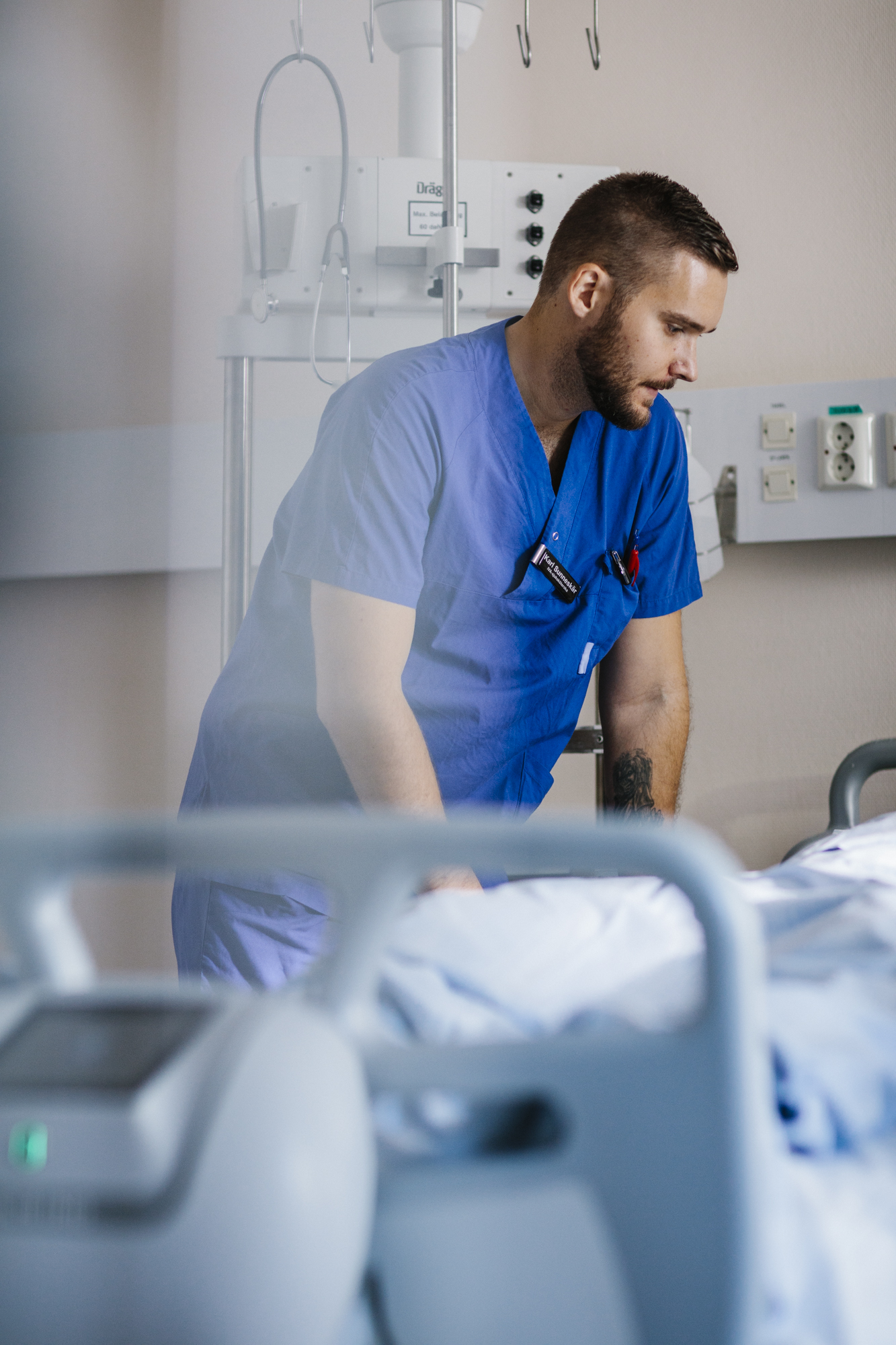Prone positioning has led to an increase in pressure injury development
Positioning COVID-19 patients suffering from severe acute respiratory distress in the prone position improves survival as compared to supine positioning. However, an increase in pressure injury development has been reported. Prone positioning increases the risk for skin breakdown on the face, sternum, hips, and knees and may lead to pressure injuries. These areas may require additional padding (EPUAP 2020).

Use pressure redistribution surface to offload pressure points on the face and body and make sure to:
- assess other body areas that may be at risk in the prone position, at each rotation;
- assess for facial pressure injuries, at each rotation;
- adjust the head every second hour, as individuals placed in the prone position may be at increased risk for the development of facial pressure injury.
Facial/eyelid oedema can result from prone positioning, a problem that resolves quickly.
Potential problems that may occur during or immediately after positioning include:
- inadvertent removal, manipulation, or kinking of lines and tubes; frequently evaluate and replace or reposition as necessary;
- deterioration in oxygenation/hemodynamic status, which is usually transient;
- mobilization of secretions in the airway.
Be aware that there are no special surfaces recommended due to prone position, the clinical recommendations are more focused on increased attention and use of additional cushions and padding. The individual clinical risk assessment will always be the base for the chosen pressure injury regime and aids.
Ref.
1)European Pressure Ulcer Advisory Panel, National Pressure Injury Advisory Panel, and Pan Pacific Pressure Injury Advisory Panel, Prevention and Treatment of Pressure Ulcers/Injuries: Clinical Practice Guideline. Third ed. 2019: EPUAP-NPIAP-PPPIA. Available from: https://guidelinesales.com/
2)Schub et al 2017, NURSING PRACTICE & SKILL, Patient Positioning (Critical Care Patients)
